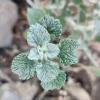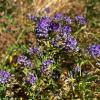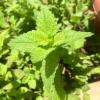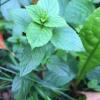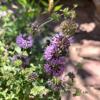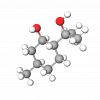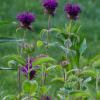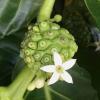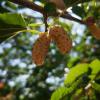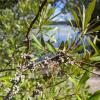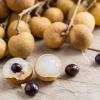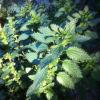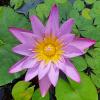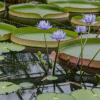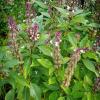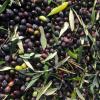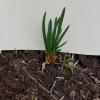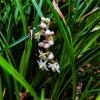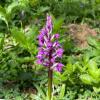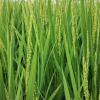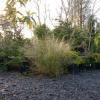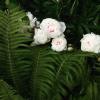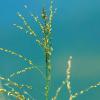In traditional medicine, Marrubium vulgare (Horehound) is used to treat bronchitis, coughs, and colds. It is also known for its properties to treat stomach diseases, lack of appetite, and fever.
Plant extracts & derivatives
Plant extract aka botanical extract-based skin care products are one of the biggest trends in the beauty industry in recent years. Being naturally balanced and dense in active ingredients, botanical extracts are excellent fighters against skin aging and inflammation.
Medicago Sativa (Alfalfa) is a perennial plant from the Fabaceae family. The common name Alfalfa is a Spanish modification of Arabic-Persian origin meaning horse food. The plant is distributed and cultivated all around the world and used as livestock fodder.
Discovered by the Arabs, Alfalfa (Medicago sativa) is one of the first edible medicinal herbs, often called the "father of all foods." However, only recently has it been rediscovered for its valuable nutritional properties.
It has been written historically that “balm is sovereign for the brain, strengthening the memory and powerfully chasing away melancholy.” Indeed, Balm Mint (Melissa Officinalis) has been considered a cure-all for relieving fever from colds or flu by inducing perspiration, relieving stomach and di
Peppermint (Mentha Piperita) oil was used as an inhalant to calm the nerves and relieve asthma and migraine headaches. The herb was also used as a mosquito and rat repellent and as a treatment for some skin diseases.
This species of Mint is the Pulegium of the Romans, so named by Pliny (Mentha Pulegium) from its reputed power of driving away fleas - pulex being the Latin for flea, hence the Italian pulce and the French puce.
There have always been "natural" remedies that indigenous populations have used in most parts of the tropics – their reported effectiveness has become part of local folklore. These include Neem bark, Eucalyptus leaves, and Myrrh oil.
Bee balm (Monarda Didyma) is native to North America and was discovered by the American Indians who called it Oswego; they used it as a remedy for colds, sore throats, and chest complaints and as a cure for dandruff and pimples.
Native to the Pacific Islands, Noni (Morinda Citrifolia) is commonly called Indian Mulberry. Traditionally known throughout its native region as the "Aspirin of ancient times," Noni is valued for its health-promoting qualities.
Mulberries naturally grow everywhere in Japan and are planted for silk raising.
The Banana (Musa Sapientum) plant looks like a tree, but it is actually a very large barkless plant.
Historically, Bayberry (Myrica Cerifera) has been used in folk medicine for its tonic, stimulant, and astringent properties, but the most popular use of this herb is for making candles.
Longan is the fruit of Nephelium longana, a tropical tree native to China from the Sapindaceae family. The fruit of Nephelium longana has a yellow-brown shell, which has a translucent white pulp inside that surrounds a black seed, which is why it is called a "dragon's eye".
Nymphaea Caerulea Flower Extract is derived from the Blue Lotus, a universal symbol of beauty. The Blue Lotus, or the sacred blue lily of the Nile, is known in many parts of the world as a symbol of tranquility and beauty.
Nymphaea Gigantea (Giant waterlily or Blue waterlily) is an aquatic perennial plant from the family Nymphaeaceae that is native to Australia. It is edible and grows in still-water bodies.
Ocimum Basilicum Extract is a light to medium amber liquid with a characteristic odor derived from the whole plant of Sweet Basil, also called Common Basil.
Basil (Ocimum Basilicum) is a fragrant, green herb regarded as sacred in ancient India and used widely in cooking today.
This large and delicately fragrant flower usually opens between six and seven o'clock in the evening, hence the name Evening Primrose (Oenothera Biennis).
The olive is a culture, it is nature, synonymous with health, and a symbol of purity. From a chemical point of view, it is an extraordinarily rich fruit.
Ophiopogon Japonicus (also known as "Dragon's beard" or "Snake's beard") is a plant that has long been used in traditional Korean and Chinese medicine.
Cellulite, tired legs, premenstrual period, menopause, and obesity are examples of situations and stages in women's lives in which water retention occurs quite frequently.
Opuntia Ficus-Indica Stem Extract is a natural ingredient obtained by applying bespoke enzymatic treatment able to reduce the molecular dimension of the Indian fig polysaccharide to enhance the effectiveness of these macr
Orchid (Orchis Mascula) was once a popular nutritious drink found in cafes on London's Fleet Street.
Oryza Sativa Extract is a clear liquid, a natural ingredient derived from the “essence” of rice. It provides just what thirsty skin needs- substances known to be part of the Natural Moisturizing Factor of the skin. Corneometer tests proved it.
The ricegrass, Oryzopisis miliciea – a common white rice, is grown in southern India. The grasses are planted in the early spring and harvested every three weeks throughout the summer. Freshly harvested plants are extracted in water and purified.
The Peony (Paeonia Albiflora) has a history of being used as a magical herb. The seeds were worn as a necklace for protection and in rituals, while the roots were carved into amulets and rosary beads.
Panicum Miliaceum Seed Extract is a natural extract derived from a CO2 extraction of a grain crop called Proso millet, or just Millet.
